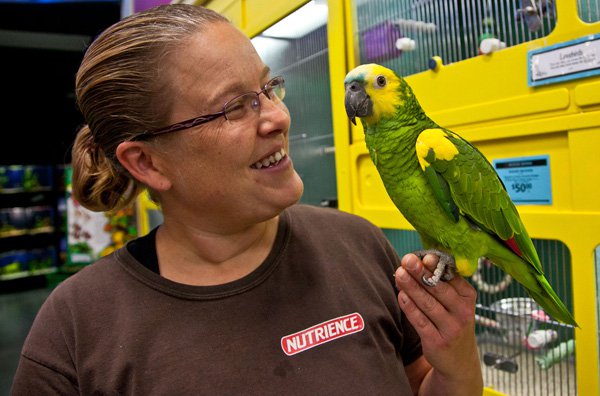
Do I need Planning Permission ?
Prior to your investing in Stables, check to see whether or not you need planning permission. Normally you do, even for a Field Shelter unless it is mobile.
However, should you wish to put stables in your garden or replace existing stables these circumstances may be an exception. If you want to put your stables in your garden, the general rules are that the buildings must be 5m away from the house and 1.0m from the boundary of your garden. The stables should be for private and not commercial use. For full and detailed confirmation go to www.planningportal.gov.uk a government information site that will either answer all your questions or point you in the right direction.
Should you have stables already situated on your property and wish to replace them like for like with a newer building, you must take good location photographs before pulling down your old stables. This ensures that you have photographic evidence that stables once stood on the plot you wish to erect your replacement stables.
Nevertheless, you must contact your local planning office before you proceed. Inform them of the stable construction and that the layout will blend in with the surrounding area, your land will not deteriorate or decline with horses being kept on it and that your muckheap will be well hidden and not an environmental risk.
Inform your neighbours, they may worry about the noise and smell . Assure them that this will not be a problem to them. Investigate how you are going to dispose of your manure. You may have a local farmer who will remove it when required or alternatively invest in an on-site skip. Burning your manure, especially woodshaving etc smells awful, is environmentally poor and may even be illegal, so an alternative disposal needs to be carefully thought out.
A Solid Base
Unless you are converting existing buildings, pre-fabricated horse stables are the popular choice. If you can afford brick built stables, you may find it unlikely to get planning permission. Unfortunately too many people quickly converted them to annexes or granny flats. Your local council may not look too kindly on such applications.
Prime Stables Ltd will help you work out what you need and will be able to suggest certain designs and layouts. You will have to get your base prepared yourself or bring in a recommended local groundwork抯 contractor so that you are ready for the delivery and installation of your stables. We recommend that you have your base ready one-week before delivery of your stables to allow for the curing of concrete base and brickwork plinth.
We recommend that you lay 150mm of compacted hardcore and then 100mm inches of an equine concrete mix. You can obtain this from any local ready-mix concrete supplier. You will then need to lay a course of semi-engineering bricks. Upon receipt of order we will then send to you a brickwork plan for your stables to be sited onto.
Your base might cost as much as your stables - do not try to cut costs on your base. If the base is wrong and uneven the stables will not fit. It must be level with the correct fall for drainage. Ask professionals for advice.
Your Next Step..
Most people have a budget to work with. Should you only be able to afford a couple of stables, but in the future would like to add on extra stables, hay barns etc, would you be able to fund a larger base?
The site where your stables are to be situated must have space for your installation team to manoeuver. Remember that your installation team needs room to work and if your stables are going next to an existing building, you should allow at least 600mm between the two.
There are many stable manufacturing companies. Request brochures from at least three companies and ask if they have customers in your area that you can visit, so that you can view their stables and if they are prepared to talk to you and give an honest opinion.
Stable Checks
- Some companies provide a design service. Prime Stables Ltd will supply you with this service, for a minimal fee of ?5.00 + vat, which is refundable against your order. All we ask is that you send a sketch/layout of your stabling needs. Six copies of an ordnance survey map will be required and can be obtained from www.planningapplicationmaps.co.uk Then simply position where the stables will be sited, marking which way is north and if you know where any land drains, pipes etc are situated. Once this information is received we will have a professional architectural drawing drawn up for you.
- How long will your delivery date be after you have placed your order? Most companies quote four to six weeks, but they may be dependent on weather conditions.
- You will probably have to pay a deposit when you place your order. This is normally 50% of the total price.
- Make sure you are aware of exactly what is included in your quotations. Check amounts for VAT, delivery charges and supply & erection. What fittings come as standard with your stable order etc.
- Some firms have arrangements for finance, check out the best deals.
- Check with your local planning office in case there are rules about materials make and colour of roofing.
- Kickboards need to be strong, they need to withstand horses kicking, leaning and rubbing against them. Full lining is worth the extra expense ?it is more cost effective to have full height kickboards than to have structural repairs at the end of the day. Check if your stable manufacturers supply chew strips as standard.
- Access ?your supplier must have easy access. They are probably driving 7.5 tonne, fully loaded lorries with 18ft beds. If the access area is poached they will sink up to their axles immediately. The driver will also need a clear entrance; a lorry cannot turn like a car and needs to swing wider through gateways.
- Ventilation is a high priority in stabling. Ensure that there is adequate airflow at the ridges of your stable for your horse to stay healthy.
- Standard loose boxes are 3.1m x 3.6m for a pony and 3.6m x 3.6m for a horse. Do not scrimp on the size of stable. Will your horse have to be box-bound or isolated due to infection? The bigger the stable the better surrounding for your horse. You may use more bedding, but in the long term your horse will be cleaner to muck out if he has more room.
- Consider the size of your Tack Room and Hay Barn. How many horses do you have and do you have enough room to cater for housing the tack and rugs etc, as well as a bulk load of feed and hay?
 Advantages and things to keep in mind for Building Chicken Houses
Advantages and things to keep in mind for Building Chicken
Advantages and things to keep in mind for Building Chicken Houses
Advantages and things to keep in mind for Building Chicken
 Ten Questions To Ask Your Vet During Your Dog’s Annual Check-up
Ten Questions To
Ten Questions To Ask Your Vet During Your Dog’s Annual Check-up
Ten Questions To
 The Core Personality Traits Of Herding And Shepherding Dogs
The Core Personal
The Core Personality Traits Of Herding And Shepherding Dogs
The Core Personal
 The Cat’s Whiskers !
The Cat’s Whisker
The Cat’s Whiskers !
The Cat’s Whisker
 An Introduction To Koi Carp
An Introduction T
An Introduction To Koi Carp
An Introduction T
Copyright © 2005-2016 Pet Information All Rights Reserved
Contact us: www162date@outlook.com